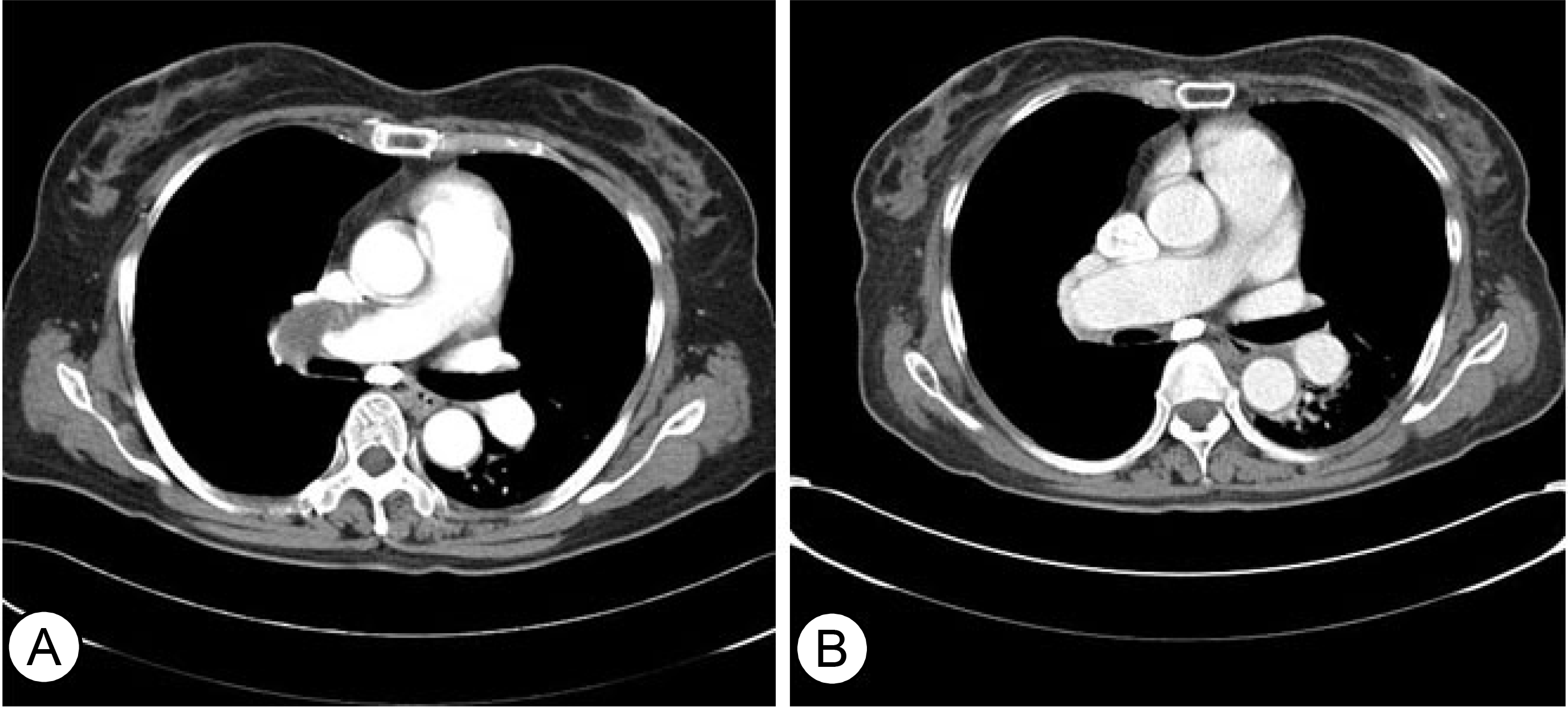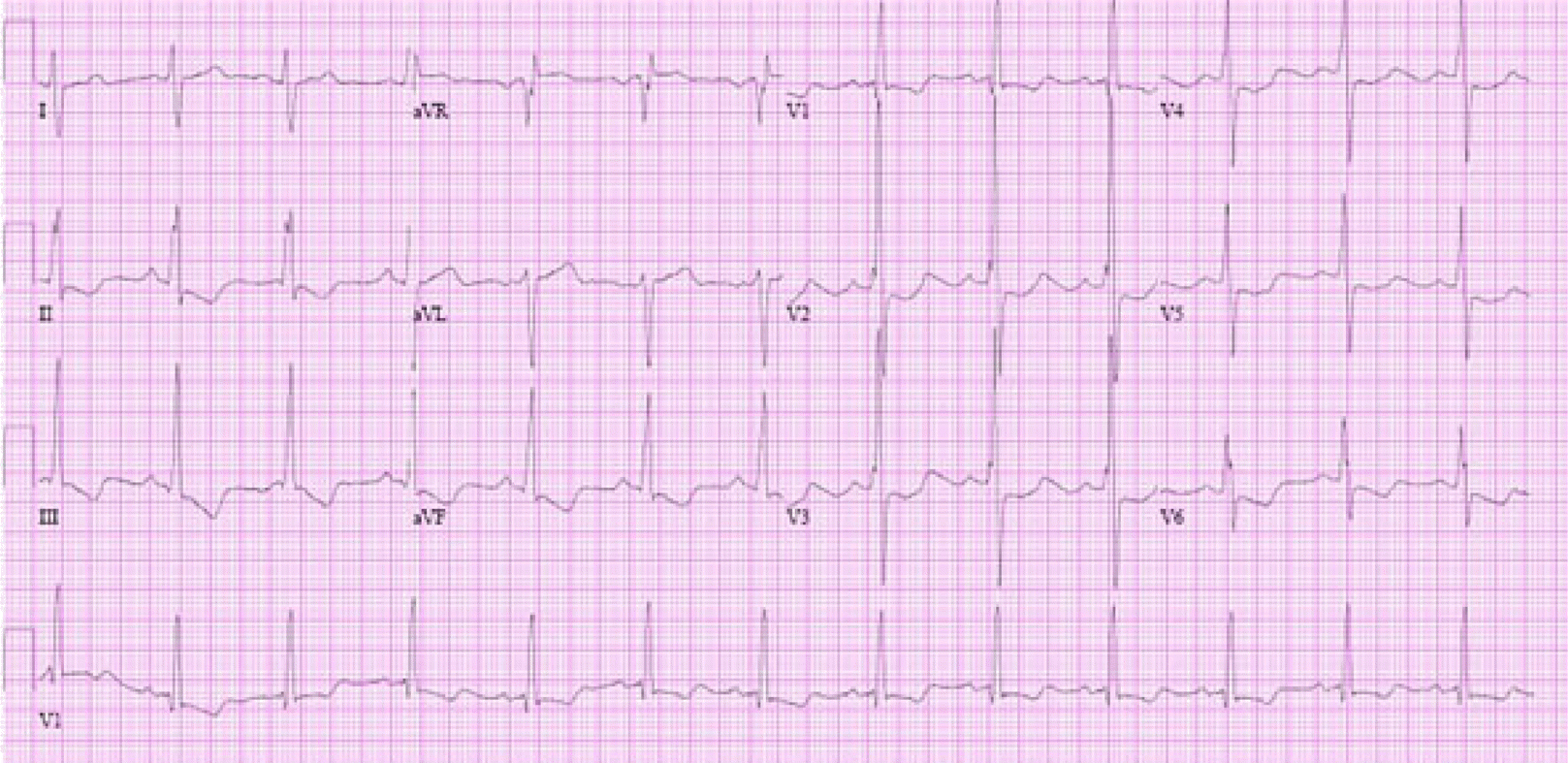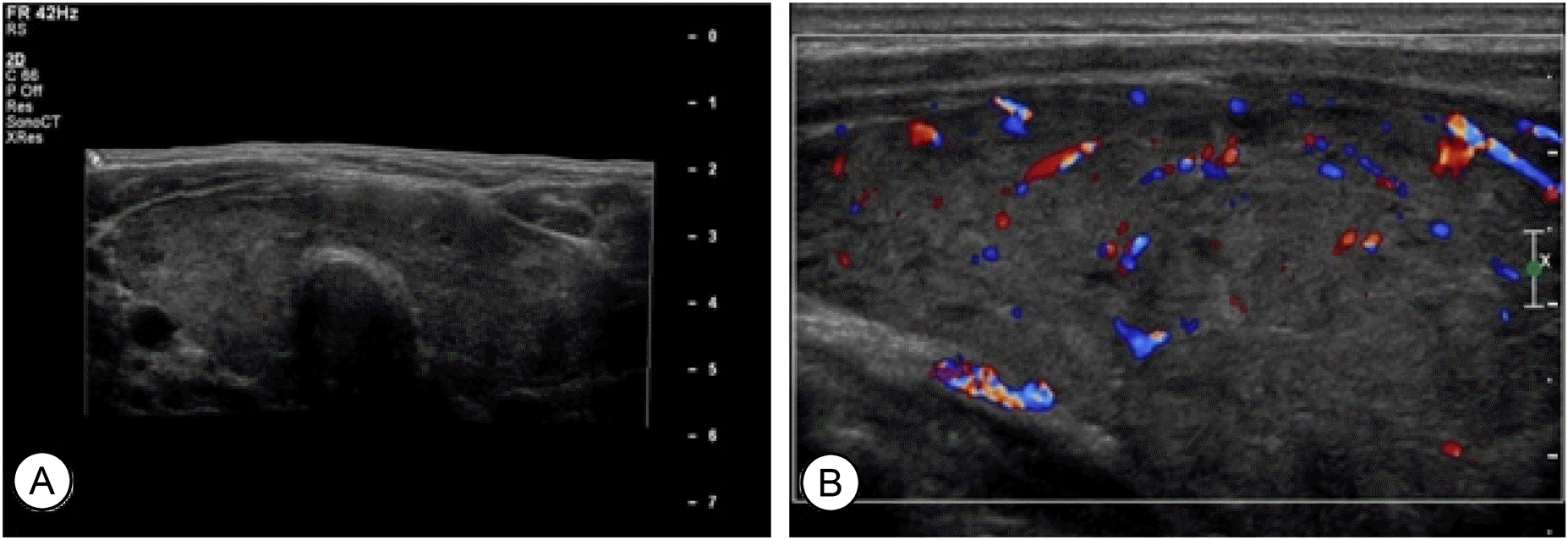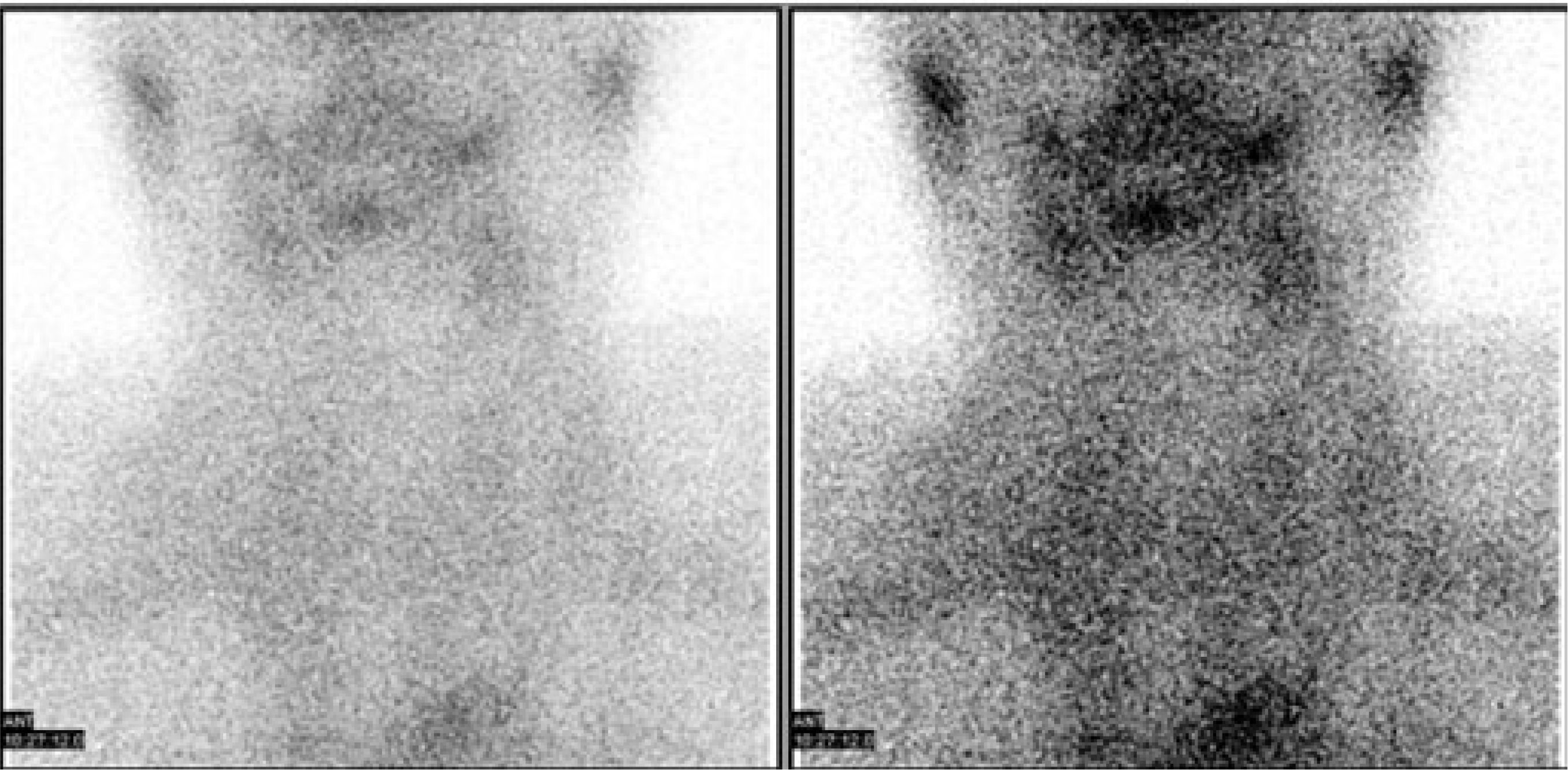Abstract
A few cases of severe pulmonary hypertension with right heart failure associated with Graves’ disease were reported in the literature. However, cases of pulmonary hypertension with right heart failure recurred by Graves’ disease is very rare. We describe the case of a 60-year old woman who had been treated pulmonary hypertension caused by right pulmonary artery thromboembolism seven years ago. Recently, her pulmonary hypertension with right heart failure was recurred by Graves’ disease. The patient’s symptoms of pulmonary hypertension was resolved after treatment of Graves’ disease.
Go to : 
REFERENCES
1.Galiè N., Hoeper MM., Humbert M., Torbicki A., Vachiery JL., Barbera JA, et al. Guidelines for the diagnosis and treatment of pulmonary hypertension. Eur Heart J. 2009. 30:2493–537.
2.Simonneau G., Robbins IM., Beghetti M., Channick RN., Delcroix M., Denton CP, et al. Updated clinical classification of pulmonary hypertension. J Am Coll Cardiol. 2009. 54:S43–54.

3.Yoon HJ., Jin SW., Jung SJ., Jang SH., Lee JM., Kim JH, et al. A case of hyperthyroidism as a cause of pulmonary hypertension. Korean J Med. 2003. 65:S773–6.
4.Choi BH., Eom YS., Kim SH., Choi HS., Chung WJ., Lee SH. A case of ascites and extensive abdominal distension caused by reversible pulmonary arterial hypertension associated with Graves'disease. Endocrinol Metab. 2011. 26:248–52.
6.Chu JW., Kao PN., Faul JL., Doyle RL. High prevalence of autoimmune thyroid disease in pulmonary arterial hypertension. Chest. 2002. 122:1668–73.

7.Suk JH., Cho KI., Lee SH., Lee HG., Kim SM., Kim TI, et al. Prevalence of echocardiographic criteria for the diagnosis of pulmonary hypertension in patients with Graves' disease: before and after antithyroid treatment. J Endocrinol Invest. 2011. 34:e229–34.
8.Voelkel MA., Wynne KM., Badesch DB., Groves BM., Voelkel NF. Hyperuricemia in severe pulmonary hypertension. Chest. 2000. 117:19–24.

Go to : 
 | Fig. 1.(A) Huge sized thrombus in right pulmonary artery was showed in chest CT of 7 years before admission, (B) On admission day, chest CT revealed no evidence of pulmonary arterial thrombus. |
 | Fig. 2.On admission day, the electrocardiography showed normal sinus rhythm, right ventricular hypertrophy and ST depression in pre-cordial leads. |
 | Fig. 3.On admission day, transthoracic-echocardiography revealed severe pulmonary hypertension. (A) Pressure gradient between right atrium and ventricle is 85.7 mmHg, (B) Right ventricle is markedly enlarged. Left ventricle showed D-shape appearance. |




 PDF
PDF ePub
ePub Citation
Citation Print
Print




 XML Download
XML Download